
How to Use SparkFun MAX31855K Thermocouple Breakout: Examples, Pinouts, and Specs
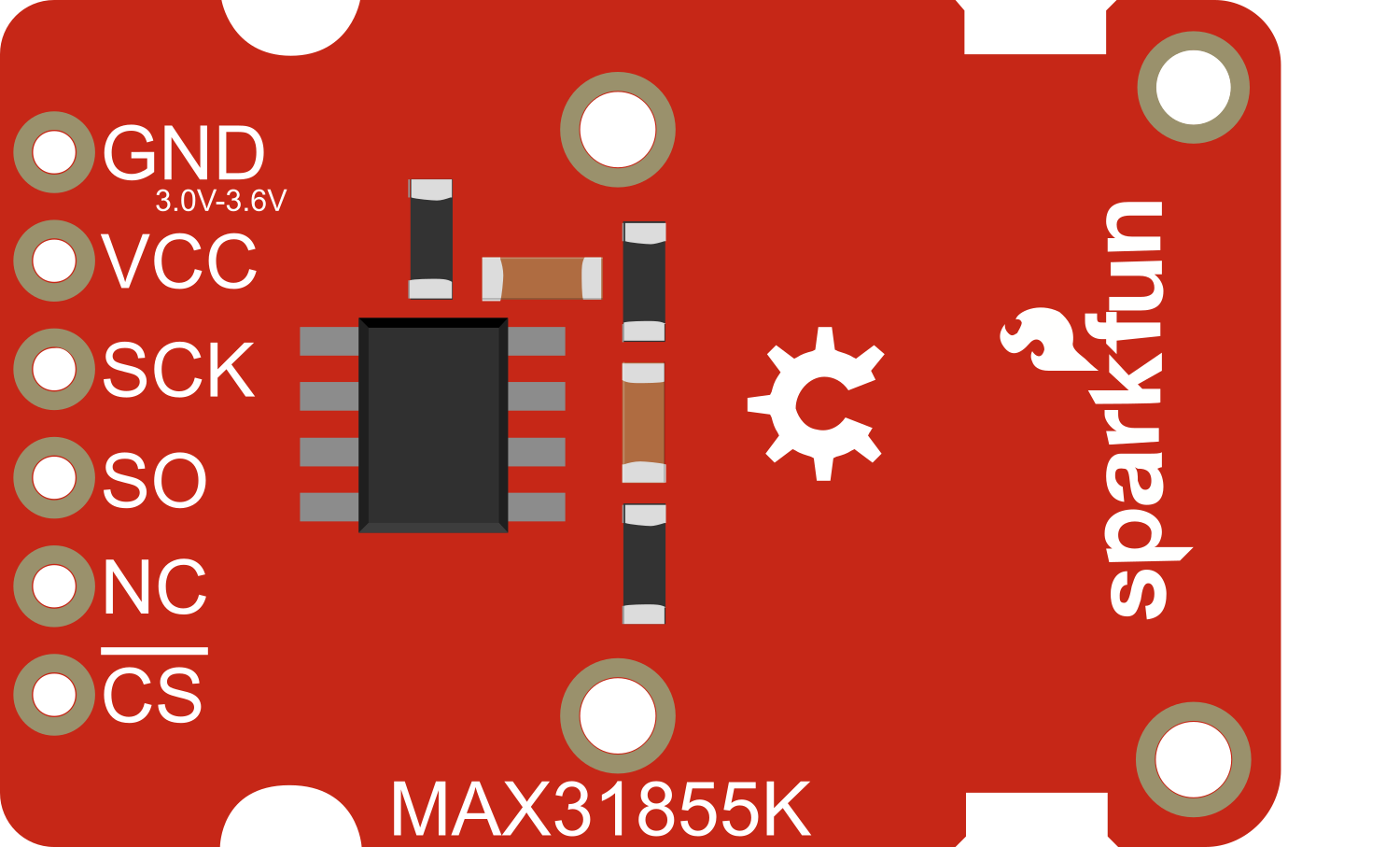
 Design with SparkFun MAX31855K Thermocouple Breakout in Cirkit Designer
Design with SparkFun MAX31855K Thermocouple Breakout in Cirkit DesignerIntroduction
The SparkFun MAX31855K Thermocouple Breakout is an electronic module designed for precise temperature measurement. It incorporates the MAX31855K integrated circuit to interface with a K-type thermocouple, providing a digital representation of the thermocouple's temperature reading. This breakout is ideal for a wide range of applications, including industrial systems, consumer products, and hobbyist projects where accurate temperature monitoring is crucial.
Explore Projects Built with SparkFun MAX31855K Thermocouple Breakout
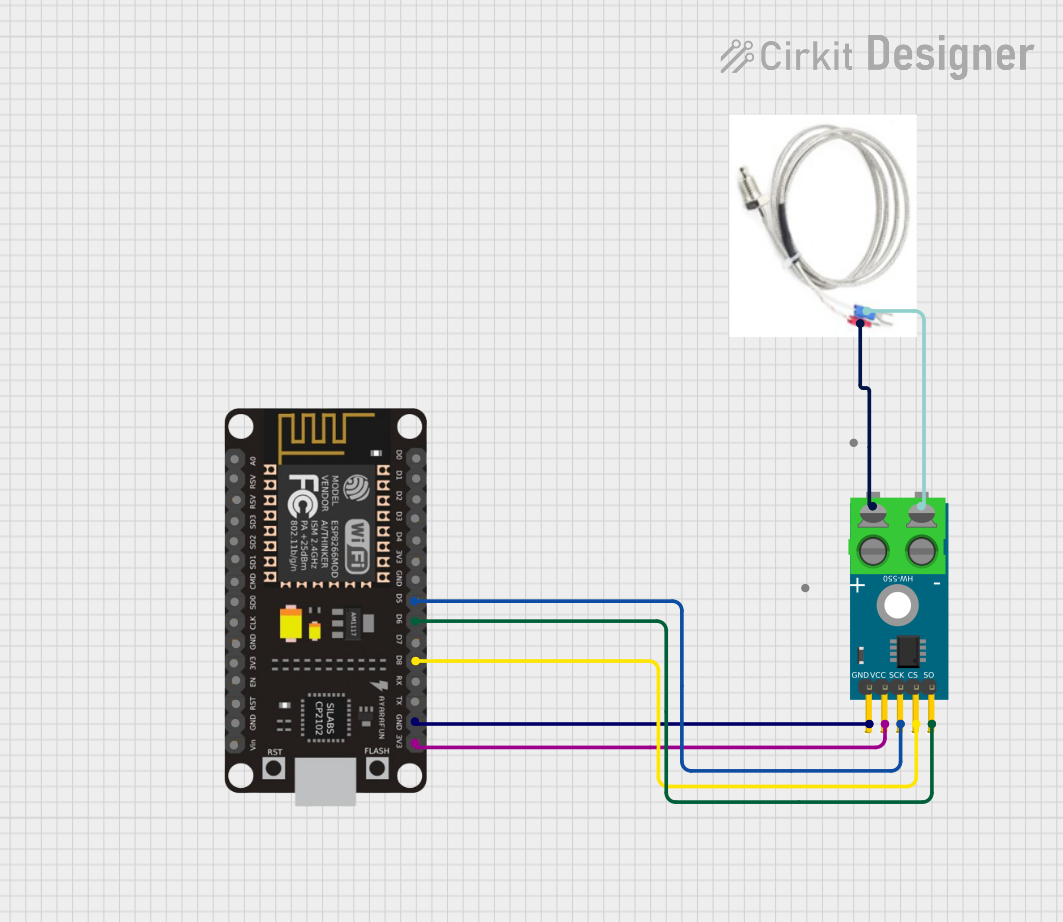
 Open Project in Cirkit Designer
Open Project in Cirkit Designer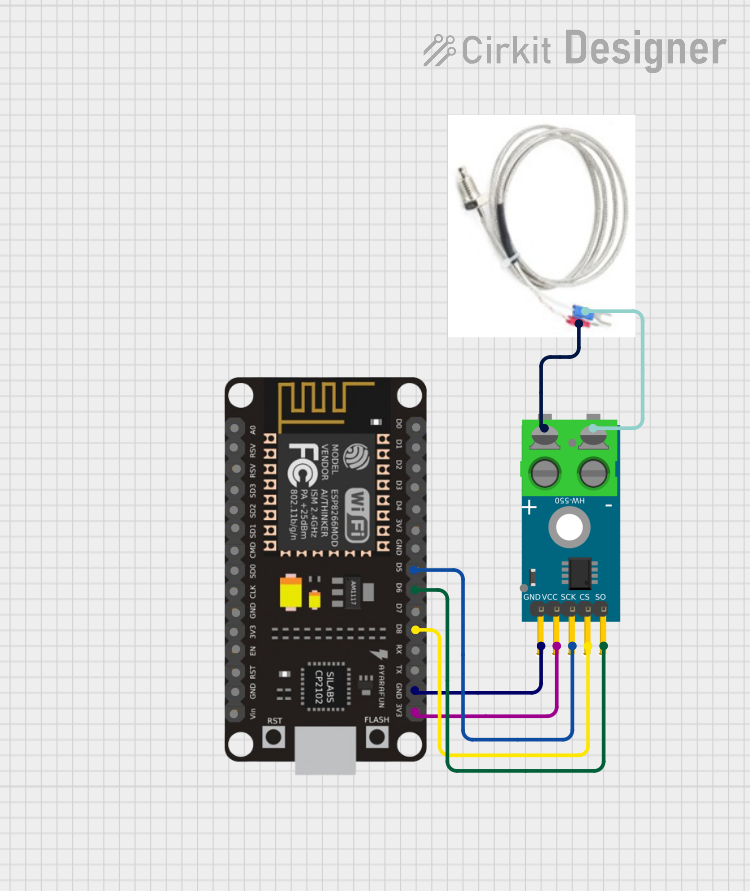
 Open Project in Cirkit Designer
Open Project in Cirkit Designer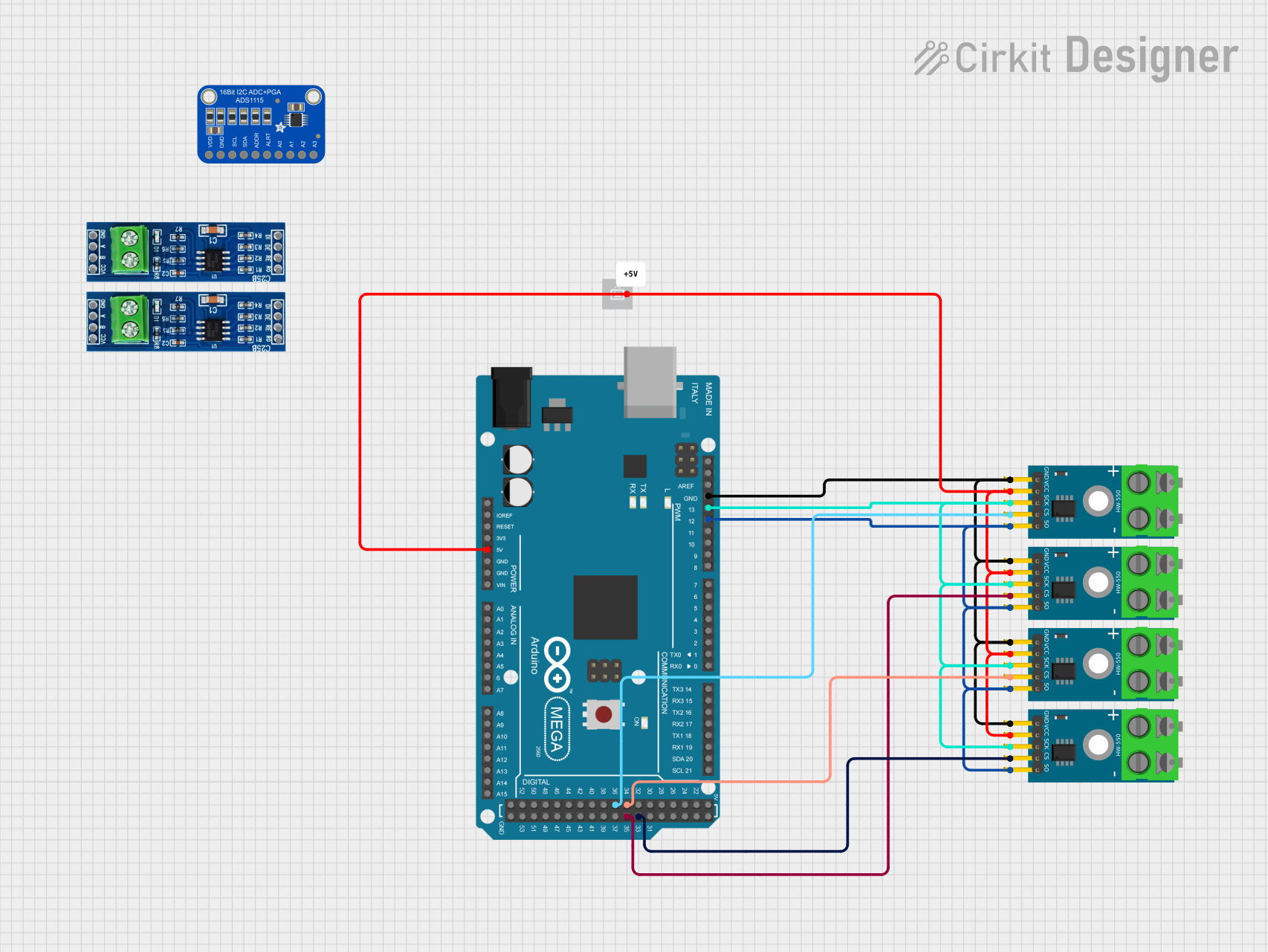
 Open Project in Cirkit Designer
Open Project in Cirkit Designer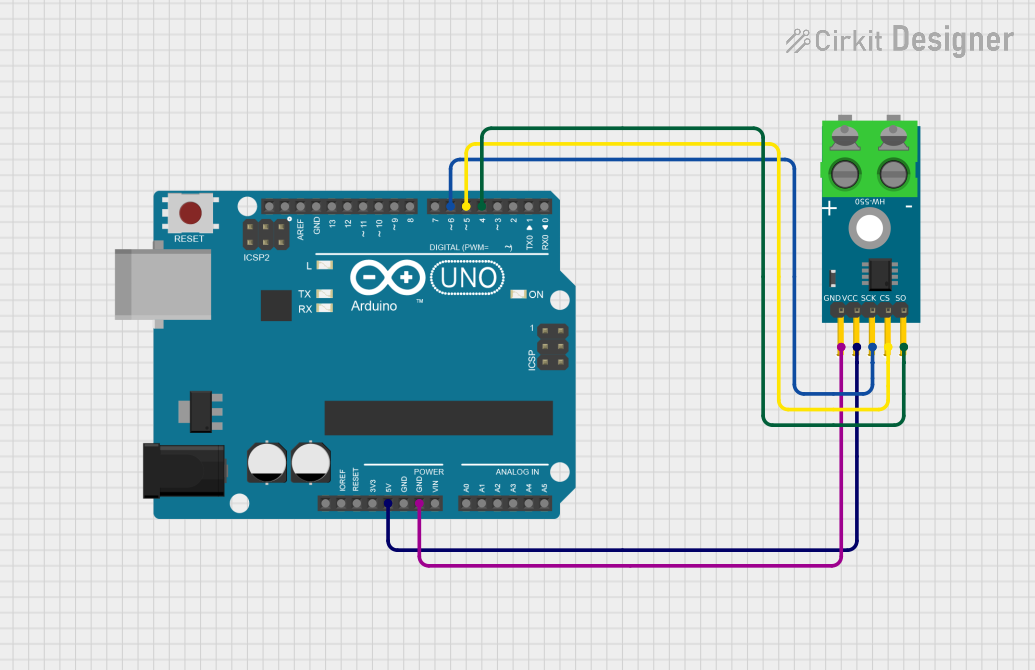
 Open Project in Cirkit Designer
Open Project in Cirkit DesignerExplore Projects Built with SparkFun MAX31855K Thermocouple Breakout

 Open Project in Cirkit Designer
Open Project in Cirkit Designer
 Open Project in Cirkit Designer
Open Project in Cirkit Designer
 Open Project in Cirkit Designer
Open Project in Cirkit Designer
 Open Project in Cirkit Designer
Open Project in Cirkit DesignerCommon Applications and Use Cases
- Industrial temperature monitoring systems
- Consumer electronics that require temperature control
- Data logging and environmental monitoring
- Prototyping and experimentation in labs
- Educational projects involving temperature measurement
Technical Specifications
Key Technical Details
- Thermocouple Type: K-type
- Temperature Resolution: 0.25°C
- Temperature Range: -200°C to +1350°C (thermocouple limits)
- Supply Voltage: 3.0V to 3.6V
- Interface: SPI (Serial Peripheral Interface)
- Operating Current: 1.5mA
Pin Configuration and Descriptions
| Pin Number | Name | Description |
|---|---|---|
| 1 | GND | Ground connection |
| 2 | VCC | Supply voltage (3.0V to 3.6V) |
| 3 | DO | Data Output for SPI interface |
| 4 | CS | Chip Select for SPI interface |
| 5 | CLK | Clock input for SPI interface |
| 6 | NC | No Connection (reserved for future use) |
| 7 | TC+ | Thermocouple positive connection |
| 8 | TC- | Thermocouple negative connection |
Usage Instructions
How to Use the Component in a Circuit
- Power Supply: Connect the VCC pin to a 3.0V to 3.6V power source and the GND pin to the ground.
- Thermocouple Connection: Attach the K-type thermocouple leads to the TC+ and TC- pins, ensuring correct polarity.
- SPI Interface: Connect the DO, CS, and CLK pins to the corresponding SPI pins on your microcontroller (e.g., an Arduino UNO).
Important Considerations and Best Practices
- Ensure that the thermocouple wires are connected with the correct polarity to the breakout board.
- Use a stable power supply to avoid fluctuations that could affect the temperature readings.
- Keep the breakout board away from heat sources that could interfere with the temperature measurement.
- When using long thermocouple wires, consider using a twisted pair to reduce electrical noise.
Example Code for Arduino UNO
#include <SPI.h>
// Define the SPI CS Pin
const int csPin = 10;
void setup() {
// Initialize Serial Communication
Serial.begin(9600);
// Set the CS pin as an output
pinMode(csPin, OUTPUT);
// Start the SPI library
SPI.begin();
}
void loop() {
// Bring the CS pin low to enable the device
digitalWrite(csPin, LOW);
// Read data from the sensor
uint32_t rawData = SPI.transfer(0) << 24;
rawData |= SPI.transfer(0) << 16;
rawData |= SPI.transfer(0) << 8;
rawData |= SPI.transfer(0);
// Bring the CS pin high again to disable the device
digitalWrite(csPin, HIGH);
// Process the raw data
if (rawData & 0x7) {
// Handle errors (if any)
Serial.println("Error reading temperature");
} else {
// Convert raw data to temperature (Celsius)
int temp = (rawData >> 18) & 0x3FFF;
if (temp & 0x2000) {
temp |= 0xC000; // Sign extend negative numbers
}
double temperature = temp * 0.25;
Serial.print("Temperature: ");
Serial.print(temperature);
Serial.println(" C");
}
// Delay between readings
delay(1000);
}
Troubleshooting and FAQs
Common Issues Users Might Face
- Inaccurate Temperature Readings: Ensure that the thermocouple is properly connected and that there are no shorts or open circuits.
- No Data Output: Check the SPI connections and ensure that the correct pins are used for DO, CS, and CLK.
- Intermittent Readings: Verify that the power supply is stable and that the breakout board is not subjected to mechanical stress.
Solutions and Tips for Troubleshooting
- Double-check all connections, especially the thermocouple polarity.
- Use a multimeter to verify the supply voltage at the VCC pin.
- Ensure that the breakout board is not picking up heat from nearby components or soldering equipment.
- If using long wires, consider using shielded cables to minimize noise.
FAQs
Q: Can I use a different type of thermocouple with this breakout? A: No, the MAX31855K is specifically designed for K-type thermocouples.
Q: What is the maximum length for the thermocouple wires? A: There is no specific maximum length, but longer wires may introduce more noise and potential for error. Use shielded twisted-pair wires for long runs.
Q: How can I calibrate the temperature readings? A: The MAX31855K is factory-calibrated for K-type thermocouples. However, for critical applications, you may need to perform a system-level calibration using a known temperature reference.
Q: Can I use multiple MAX31855K Breakouts with one microcontroller? A: Yes, you can use multiple breakouts with a microcontroller by using separate CS pins for each breakout and toggling them as needed to communicate with each device individually.